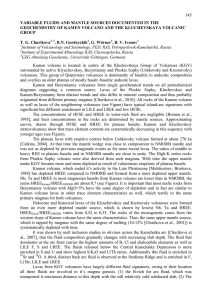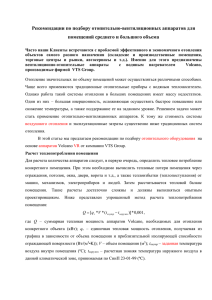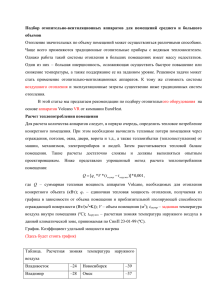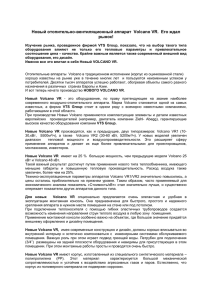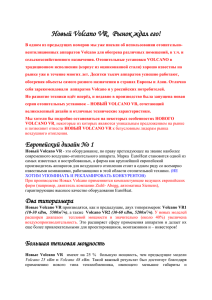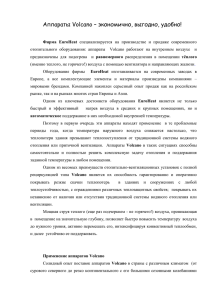20 the magmatic feeding system of the klyuchevskaya group of
advertisement
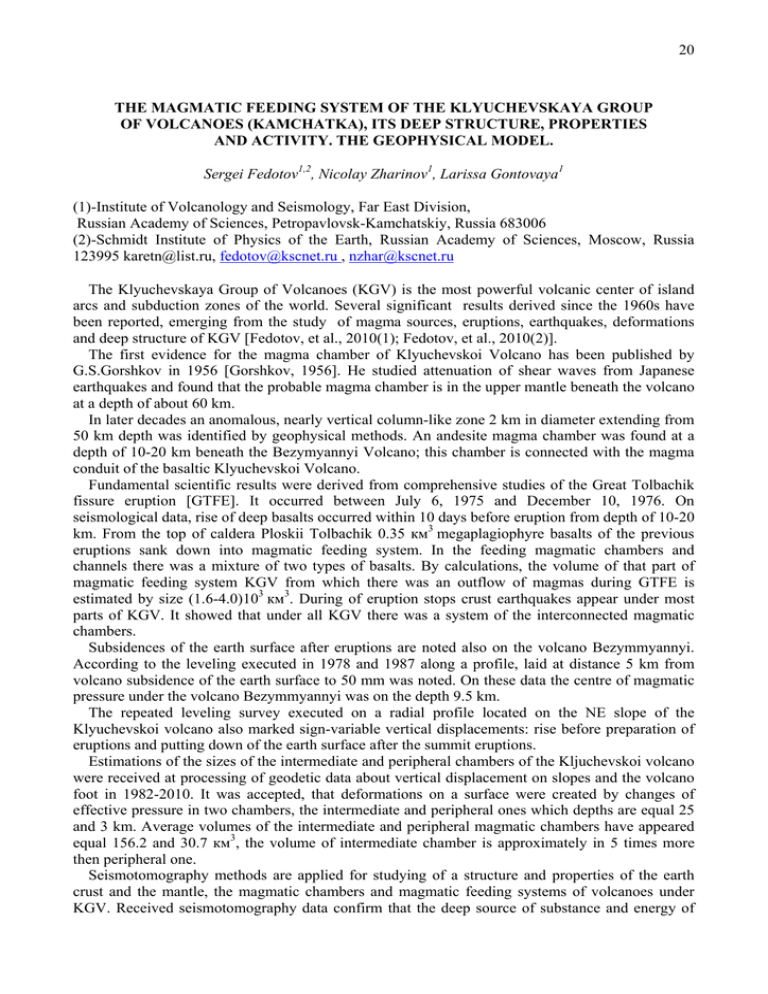
20 THE MAGMATIC FEEDING SYSTEM OF THE KLYUCHEVSKAYA GROUP OF VOLCANOES (KAMCHATKA), ITS DEEP STRUCTURE, PROPERTIES AND ACTIVITY. THE GEOPHYSICAL MODEL. Sergei Fedotov1,2, Nicolay Zharinov1, Larissa Gontovaya1 (1)-Institute of Volcanology and Seismology, Far East Division, Russian Academy of Sciences, Petropavlovsk-Kamchatskiy, Russia 683006 (2)-Schmidt Institute of Physics of the Earth, Russian Academy of Sciences, Moscow, Russia 123995 karetn@list.ru, fedotov@kscnet.ru , nzhar@kscnet.ru The Klyuchevskaya Group of Volcanoes (KGV) is the most powerful volcanic center of island arcs and subduction zones of the world. Several significant results derived since the 1960s have been reported, emerging from the study of magma sources, eruptions, earthquakes, deformations and deep structure of KGV [Fedotov, et al., 2010(1); Fedotov, et al., 2010(2)]. The first evidence for the magma chamber of Klyuchevskoi Volcano has been published by G.S.Gorshkov in 1956 [Gorshkov, 1956]. He studied attenuation of shear waves from Japanese earthquakes and found that the probable magma chamber is in the upper mantle beneath the volcano at a depth of about 60 km. In later decades an anomalous, nearly vertical column-like zone 2 km in diameter extending from 50 km depth was identified by geophysical methods. An andesite magma chamber was found at a depth of 10-20 km beneath the Bezymyannyi Volcano; this chamber is connected with the magma conduit of the basaltic Klyuchevskoi Volcano. Fundamental scientific results were derived from comprehensive studies of the Great Tolbachik fissure eruption [GTFE]. It occurred between July 6, 1975 and December 10, 1976. On seismological data, rise of deep basalts occurred within 10 days before eruption from depth of 10-20 km. From the top of caldera Ploskii Tolbachik 0.35 км3 megaplagiophyre basalts of the previous eruptions sank down into magmatic feeding system. In the feeding magmatic chambers and channels there was a mixture of two types of basalts. By calculations, the volume of that part of magmatic feeding system KGV from which there was an outflow of magmas during GTFE is estimated by size (1.6-4.0)103 км3. During of eruption stops crust earthquakes appear under most parts of KGV. It showed that under all KGV there was a system of the interconnected magmatic chambers. Subsidences of the earth surface after eruptions are noted also on the volcano Bezymmyannyi. According to the leveling executed in 1978 and 1987 along a profile, laid at distance 5 km from volcano subsidence of the earth surface to 50 mm was noted. On these data the centre of magmatic pressure under the volcano Bezymmyannyi was on the depth 9.5 km. The repeated leveling survey executed on a radial profile located on the NE slope of the Klyuchevskoi volcano also marked sign-variable vertical displacements: rise before preparation of eruptions and putting down of the earth surface after the summit eruptions. Estimations of the sizes of the intermediate and peripheral chambers of the Kljuchevskoi volcano were received at processing of geodetic data about vertical displacement on slopes and the volcano foot in 1982-2010. It was accepted, that deformations on a surface were created by changes of effective pressure in two chambers, the intermediate and peripheral ones which depths are equal 25 and 3 km. Average volumes of the intermediate and peripheral magmatic chambers have appeared equal 156.2 and 30.7 км3, the volume of intermediate chamber is approximately in 5 times more then peripheral one. Seismotomography methods are applied for studying of a structure and properties of the earth crust and the mantle, the magmatic chambers and magmatic feeding systems of volcanoes under KGV. Received seismotomography data confirm that the deep source of substance and energy of 21 magma formation is located at the top border of a seismofocal zone or plate. The area enriched by melts stretches upwards to the earth crust through the asthenosphere. On level-by-level maps and vertical sections of seismic velocity anomalies for the depths of 0-40 km, the probable arrangement of the magmatic chambers of active volcanoes, possible zones of magma movement and the solidified chambers in the earth crust under KGV are visible. There are intensive anomalies under all KGV. The low velocities are observed on depths of 25-35 and 0-10 km under the Kljuchevskoi volcano. The geophysical model of modern magmatic feeding system of KGV is constructed [Fedotov, etc., 2010(1); Fedotov et al., 2010(2)]. 1. Depths about 160 km under KGV, the upper part of a plunging Pacific plate. An energy source and fluids necessary for magma origin are here. 2. Depths of 160-40 km, the asthenosphere. A partial melting, formation of picritic magmas, gravitational convection, and rise of diapires and asthenosphere magmatic columns occur here. 3. Depths of 40-25 km, the crust-mantle layers. The excess pressure of ultramafic magmas should be maximum. Here at a base of the lithosphere intrusions and main accumulation of magmas occur, first of all, in the intermediate chamber of the Klyuchevskoi volcano where it is accompanied by many small long-period earthquakes. 4. Depths of 25-5 km, earth crust. The rise of magmas to the Klyuchevskoi volcano, to other volcanoes and differentiation of magmas, the crust magmatic chambers of the andesite volcano Bezymmyannyi and of the basaltic volcano Ploskii Tolbachik are here. These main active volcanoes of KGV located in its average part are stretched along the axis of volcanic belt of Kamchatka. On depths of 35-5 km under all KGV is located a big complex system of the connected magmatic chambers which total volume can exceed 1900 км3. 5. Depths of 5-0 km, the upper part of the crust and the volcano edifices over them. The formation of magmas and the accumulation of magmas of summit and adventive eruptions of the Klyuchevskoi volcano, intrusion over numerous dikes and sills from its feeding channel occur here. Volume of the peripheral magmatic chambers of KGV volcanoes is 10 times less than intermediate ones. Under summit caldera of the volcano Ploskii Tolbachik is found its peripheral chamber, volume 50 км3. References. Gorshkov G.S. On the Depth of the Magma Chamber beneath Klyuchevskoi Volcano, Dokl. AN SSSR, 1956, vol.106, no. 4, pp. 703-705. Fedotov S.A., Zharinov N.A., Gontovaya L.I..Magmatic feeding System of Klyuchevskaya Group of Volcanoes, Kamchatka, by Data about Its Eruptions, Earthquakes, Deformations and a Deep Structure//Volcanology and Seismology. 2010. No.1.pp. 3-35. S. A. Fedotov, N. A. Zharinov and L I. Gontovaya. The Magmatic System of the Klyuchevskaya Group of Volcanoes Inferred from Data on Its Eruptions, Earthquakes, Deformation, and Deep Structure//Journal of Volcanology and Seismology. 2010, vol. 4, no.1, pp.1-33. 22 МАГМАТИЧЕСКАЯ ПИТАЮЩАЯ СИСТЕМА КЛЮЧЕВСКОЙ ГРУППЫ ВУЛКАНОВ (КАМЧАТКА), ЕЕ СТРОЕНИЕ, СВОЙСТВА И ДЕЯТЕЛЬНОСТЬ. ГЕОФИЗИЧЕСКАЯ МОДЕЛЬ. С.А. Федотов, Н.А. Жаринов, Л.И. Гонтовая Институт вулканологии и сейсмологии ДВО karetn@list.ru, fedotov@kscnet.ru, nzhar@kscnet.ru РАН, Петропавловск-Камчатский, Ключевская группа вулканов (КГВ), находящаяся на Камчатке в северной части КурилоКамчатского вулканического пояса, является одним из наиболее мощных вулканических центров мира. Приводится ряд показательных результатов, полученных с 1960-х годов при изучении источников магм, извержений, землетрясений, деформаций и глубинного строения КГВ [Федотов и др., 2010; Fedotov et al., 2010]. Первые данные о магматическом очаге Ключевского вулкана были опубликованы Г.С. Горшковым в 1956 г.[Горшков, 1956]. Он нашел по данным об экранировании поперечных волн японских землетрясений, что этот очаг находится в верхней мантии на глубине около 60 км. В последующие десятилетия геофизическими методами под Ключевским вулканом была выделена аномальная, почти вертикальная столбообразная зона поперечником 2 км, поднимающаяся с глубины 50 км. Под вулканом Безымянный на глубине 10-20 км обнаружен андезитовый магматический очаг, соединяющийся с магмоводом базальтового Ключевского вулкана. Важнейшие сведения были получены при всесторонних исследованиях Большого трещинного Толбачинского извержения (БТТИ), которое происходило с 06.07.1975 до 10.12.1976 г. По сейсмологическим данным, подъем глубинных базальтов происходил в течение 10 дней перед извержением с глубины 10-20 км. Из вершинной кальдеры Плоского Толбачика опустилось в магматическую питающую систему 0.35 км3 мегаплагиофировых базальтов предыдущих извержений. В питающих магматических очагах и каналах происходило смешение двух типов базальтов. По расчетам, объем той части магматической питающей системы КГВ, из которой происходил отток магм во время БТТИ, оценивается величиной (1.6-4.0) 103 км3. При остановках извержения начинались коровые землетрясения под большей частью КГВ. Это указывало на то, что под всей КГВ находится система взаимосвязанных магматических очагов. Проседания земной поверхности после извержений отмечены также на вулкане Безымянный. По данным нивелировок, выполненных в 1978 и 1987 гг. вдоль трассы, проложенной в 5 км по касательной к вулкану, отмечены опускания земной поверхности до 50 мм. По этим данным центр магматического давления под вулканом Безымянный находился на глубине 9.5 км. Многократные повторные наблюдения, выполненные на радиальном к вулкану профиле на СВ склоне вулкана Ключевской, также отмечают знакопеременные вертикальные смещения: подъемы перед подготовкой извержений и опускания земной поверхности после прекращения извержений. Оценки размеров промежуточного и периферического очагов Ключевского вулкана получены при обработке геодезических данных о вертикальных смещениях на склонах и подножье вулкана в 1982-2010 гг. Было принято, что деформации на поверхности создаются изменениями эффективного давления в двух центрах, промежуточном и периферическом очагах, глубины которых равны 25 и 3 км. Средние величины объемов промежуточного и периферического магматических очагов оказались равными 156.2 и 30.7 км3, промежуточный очаг по объему примерно в 5 раз больше периферического. 23 Для изучения строения и свойств земной коры и мантии, магматических очагов и магматических питающих систем вулканов под КГВ применяются методы сейсмотомографии. Полученные сейсмотомографические данные подтверждают, что глубинный источник вещества и энергии магмообразования находится у верхней границы сейсмофокального слоя, откуда вверх к земной коре сквозь астеносферу протягивается область, обогащенная расплавами. На послойных картах и вертикальных разрезах аномалий скоростей для глубин 0-40 км видно вероятное расположение магматических очагов действующих вулканов, возможных зон перетекания магм и застывших очагов в земной коре под КГВ. Интенсивные аномалии имеются под всей КГВ. Пониженные скорости наблюдаются на глубинах 25-35 и 0-10 км под Ключевским вулканом. Построена геофизическая модель современной магматической питающей системы КГВ [Федотов и др., 2010; Fedotov et al., 2010]. 1. Глубины около 160 км под КГВ, верхняя часть погружающейся Тихоокеанской плиты. Здесь находится источник энергии и летучих, необходимых для зарождения магм. 2. Глубины 160-40 км, астеносфера. Здесь происходят частичное плавление, формирование пикритовых магм, гравитационная конвекция, подъем диапиров и астеносферных магматических колонн. 3. Глубины 40-25 км, коромантийные слои. Избыточное давление мантийных магм должно быть максимальным. Здесь у подошвы литосферы происходят внедрение интрузий и основное накопление магм, в первую очередь, в промежуточном очаге Ключевского вулкана, оно сопровождается множеством слабых длиннопериодных землетрясений. 4. Глубины 25-5 км, земная кора. Здесь происходят подъем магм к Ключевскому вулкану, к другим вулканам и дифференциация магм, находятся коровые магматические очаги андезитового вулкана Безымянный и базальтового вулкана Плоский Толбачик. Эти главные действующие вулканы КГВ, расположенные в ее средней части, протягиваются по разлому вдоль вулканического пояса Камчатки. На глубинах 35-5 км под всей КГВ находится большая сложная система связанных магматических очагов, общий объем которых может превышать 1900 км3. 5. Глубины 5-0 км, верхние слои коры и постройки вулканов над ними. Здесь происходит формирование магм и накопление магм вершинных и побочных извержений Ключевского вулкана, внедрение из его питающего канала многочисленных даек и силлов. Объем периферических магматических очагов вулканов КГВ на порядок меньше, чем промежуточных. Под вершинной кальдерой вулкана Плоский Толбачик находится его периферический очаг объемом 50 км3. Литература. Горшков Г.С. О глубине магматического очага Ключевского вулкана // Докл. АН СССР. 1956. Т.106.№4. С. 703-705. Федотов С.А., Жаринов Н.А., Гонтовая Л.И. Магматическая питающая система Ключевской группы вулканов, Камчатка, по данным об ее извержениях, землетрясениях, деформациях и глубинном строении // Вулканология и сейсмология. 2010. №1. С. 3-35. S. A. Fedotov, N. A. Zharinov and L. I. Gontovaya. The Magmatic System of the Klyuchevskaya Group of Volcanoes Inferred from Data on Its Eruptions, Earthquakes, Deformation, and Deep Structure// Journal of Volcanology and Seismology. 2010, Vol.4, №1, pp.1-33.
